The STMISOC incorporates a Voltage Monitor Output (VMO) which changes the stimulus monitor feedback ratio on the basis of the step up voltage selection.
-
In x5 voltage step up mode, the monitor feedback will be 1/10.
-
In x10 step up mode, the monitor feedback will be 1/20.
The VMO feedback is, in effect, a direct sampling of the stimulus output. The stimulus output will vary as a function of applied load, so it’s helpful to be able to monitor the exact stimulus output level via the VMO. Because the VMO is proportional to the exact stimulus output voltage, small differences may be noted between expected VMO output, depending on step up mode setting and associated load.
If the stimulus output is turned off, the VMO will still report a stimulus signal; this feature is useful for evaluating a stimulus pulse prior to the point of subject application.
If the STMISOC is set to unipolar current mode output, the VMO output will report no output for stimulus voltage.
Current Feedback Monitor Cable (CBLCFMA) is recommended for use with any voltage stimulator; to isolate CBLCFMA output, use INISO and HLT100C. Always make sure to place the electrodes on the participant at least 10 minutes before starting any electrical stimulation. Use a CBLCFMA to monitor and record the actual current delivered to the participant at ALL times. A large enough change in current delivered to the participant will alter the subjective perception of the stimulation. Thus, an unpleasant shock may become painful if more current starts being delivered or become ineffectual if less current is being delivered than during threshold identification. Changes in the levels of delivered current are due to changes in impedance. Changes in impedance could be due to a number of factors: gel saturating the skin over time; gel drying up – over longer period of times; hydration level of participant; sweating; decoupling of electrodes and skin due to motion artifacts; etc.
| IMPORTANT Comprehensive Safety Guidelines for Performing Electrical Stimulation on Subjects: read Application Note 257 – Safe Use of Electrical Stimulators |
|
IMPORTANT SAFETY NOTES!
When using a STIMISO series stimulus isolation adapter, it is possible to generate voltages as high as 200 v p-p. These voltages are potentially dangerous, especially if the stimulator’s high voltage outputs are connected across the subject’s heart–meaning that the heart is potentially in the electrical path from lead to lead. This occurs when stimulation electrodes are placed on opposite sides of the subject’s body.
NEVER PLACE STIMULATION ELECTRODES ON OPPPOSITE SIDES OF THE SUBJECT’S BODY! |
| REGULATORY STANDARDS The harmonized, international regulatory standard relating to the safety of nerve and muscle stimulators is IEC 601-2-10. Certain stimulation equipment is excluded from this standard, such as stimulators intended for cardiac defibrillation; however, for the purposes of defining relevant safety metrics for the STMISOC stimulus isolation adapter this standard is quite relevant.The STMISOC is designed in such a manner that the power available to stimulate the subject is limited. This limitation of power is achieved through the use of a stimulus isolation transformer that has physical constraints (due to its size and construction) which absolutely in accordance to known physical laws constrain the maximum transferable power to be no more than a specific level.Section 51.104 of the IEC 601-2-10 standard clearly specifies the limitation of output power for a variety of wave types. * For stimulus pulse outputs, the maximum energy per pulse shall not exceed 300mJ,when applied to a load resistance of 500 ohms. * For stimulus pulse outputs, the maximum output voltage shall not exceed a peak value of 500V, when measured under open circuit conditions.The STMISOC employs a stimulus isolation transformer that limits the output pulse width to 2ms maximum, under 500 ohm load conditions. In addition, the highest available output voltage is 200V pk-pk under open circuit conditions.Maximum pulse energy calculation: Watts (instant max) = (200V x 200V) / 500 ohms = 80 W Joules (Watts x Seconds) = 80 W x 0.002 seconds = 0.16 Joules = 160mJAccordingly, the highest possible energy output using the STMISOC is 160mJ. The maximum available energy from the STMISOC stimulus isolation adapter is limited to be considerably less than the 300mJ maximum as specified by IEC 601-2-10. |
Related Publications
Superficial moist heat’s lack of influence on soleus function. J Sport Rehabil. 2009 Aug;18(3):438-47. Long BC, Hopkins JT. Dept of Health and Human Performance, Oklahoma State University, Stillwater, OK 74078, USA.

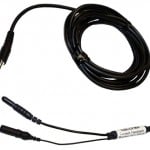
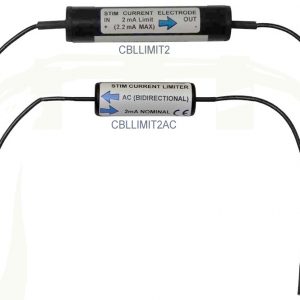
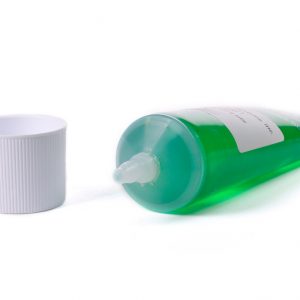
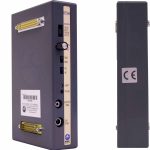
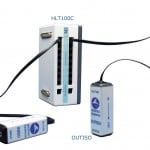
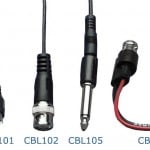
Stay Connected